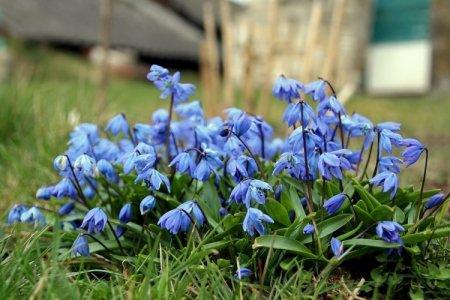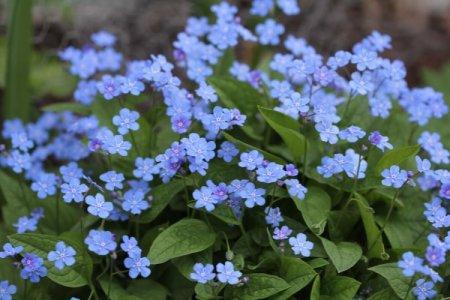
Having seen the monarda at least once, it is already difficult to forget about it. It immediately impresses with its bizarre flower shape, spicy citrus aroma and a rich blood red hue. Let's tell you more about this garden wonder!
general information
Monarda is a herbaceous plant native to North America. It can be annual or perennial. Monarda has been cultivated in Europe for several centuries, and during this time the wave of interest either subsided or increased again. But the demand for its aromatic essential oils is impressive with its consistency.
Due to its characteristic smell, many consider the monarda to be a relative of bergamot. She has large branched shoots up to 1.5 m with serrated oblong leaves. Bulky, but small flowers are collected in loose inflorescences.
Monarda is not only red, but also yellow, white or spotted. This is a wonderful honey plant and spice, and also excellent tea is brewed from it. As you can see, some advantages!

Types of monarda
Breeders have bred dozens of monarda varieties for different needs. Some of them are especially decorative, and we will talk about them today!
Lemon Monarda
A medium-sized species with a height of about 80 cm, but occasionally longer shoots are also found. The erect stem has four distinct edges. Inflorescences with a diameter of 6-7 cm delight with a variety of color palette.

Fist Monarda
One of the most branched species with spectacular toothed leaves on tall shoots. Lilac flowers resemble fluffy balls up to 6 cm in diameter.

Monarda bergamot
Despite the fact that it does not belong to real bergamot, it is so nicknamed for its characteristic aroma. This monard has excellent immunity and is capable of repelling pests.

Double monard
A tall species up to 1.5 m in height with a strong and long horizontal rhizome. The leaves of such a monarda are pale, light green, with pinkish veins. The flowers are usually purple or crimson.

Citrodera's Monarda
A compact dwarf variety up to 35 cm high, it perfectly complements flower beds and flower beds. The buds are collected in dense inflorescences-sultans. The leaves of this monarda are used as a spice.

Hybrid monard
A large and varied group of hybrid varieties for all occasions. Color, shape and size of inflorescences, intensity of flowering, shades of leaves - choose according to your taste.

Caring for the monard
Monarda loves care, but she has very simple needs. Regular watering and feeding - and now the plant is no longer a problem even for beginners!
Temperature and lighting
Monarda loves warmth and sun, but can grow in partial shade. Only in this case it grows worse and does not bloom so intensely. The site must be protected from drafts and strong gusts of wind.

Watering
Monarda needs to be watered very sparingly, but systematically. She loves moisture, but stagnation is fraught with the development of fungal diseases. During the hottest and driest periods, the monarda is watered every day.

The soil
The best option is a fertile limestone soil. But in this matter, the monard is not too capricious, so it grows on heavy and even on swampy soils. Poor soil will work as well if you have a top dressing.

Fertilizers and feeding
Monarda loves regular and intensive feeding during the entire active period. The last time it is fed is immediately before the transition to a state of rest. Foliar dressing and spraying can be used.

Wintering
Monarda roots are frost-resistant, so they do not need additional shelter for the winter. It is enough to cut off the entire ground part of the plant with the arrival of cold weather, and in the spring it will grow again.

Planting and breeding
Monarda can be planted by seeds directly into open ground in the second half of spring.They need to be mixed with sand and evenly distributed over the area, and then sealed to a depth of 1-2 cm. At first, the seedlings grow very slowly, and they need to be weeded regularly. Monarda, planted immediately in the garden, does not bloom in the first year.
You can germinate seeds with seedlings in March. The seedlings are relocated to open ground when the frosts finally pass. Keep the distance between the bushes at 30 cm, and if you plant them in rows, then 60 cm between the rows.
In autumn, an adult healthy plant, which is already at least 2-3 years old, is propagated by division. On each part, except for the roots, there should be at least 3-4 healthy shoots. You can also use root shoots by rooting them directly into the ground.

Diseases and pests of monarda
The most common diseases of Monarda are rust and powdery mildew. Fungicides and copper-based preparations are suitable for treatment. But if the monarda is grown for culinary needs, then instead of chemicals they use folk methods - infusion of garlic or onions. The rest of the plant is resistant to pests and diseases.

Monarda - photo
In addition to all the useful properties of the monarda, its unusual beauty deserves special attention. Just take a look at these photos!



























